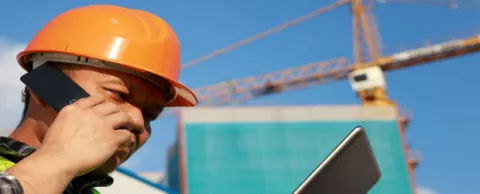
By Tim Lacey
Extreme weather. Economic uncertainty. Urban population growth. These forces are changing what it means for a city to manage resources. Water, materials, money, energy and labor are being optimized in ways that are more connected and dynamic than ever before.
The materials used to construct streets, buildings and water facilities provide a long-lasting advantage in resource management efforts. While many city managers are examining new technology tools for managing these resources with software and sensors, they’ll want to take a second look at the materials that comprise the resources themselves. Just as cities are changing quickly, materials science has evolved in significant ways to enable infrastructure with better properties.
At Dow, experience has shown that an integrated, intelligent approach to the building blocks of our cities will provide a foundation for resource efficiency. Take for example four common resources which have experienced significant scientific advances: walls, wastewater, paint and pot holes.
- Walls – Optimizing the use of energy in buildings continues to be one of the most important issues facing architects, designers and building owners today. Construction innovation in materials science has designed integrated wall systems that provide the highest standard in energy efficiency reducing greenhouse gas emissions while increasing the overall durability and sustainability of buildings.
- Wastewater – Green roofs are increasingly being used in cities for wastewater management as large volumes of overflowing storm water seep into sewer systems, polluting clean waterways and rivers. With advanced membrane technology, these living roofs absorb the rainfall to reduce the volume of storm water, improve the water quality coming off the rooftops, put more oxygen into the atmosphere and reduce the temperature around a building site commonly referred to as heat island effect. Cities like Toronto and San Francisco are passing laws encouraging or requiring green roofs for their overall benefits to the community.
- Paint – From office walls to stripes on the road, paint covers a considerable amount of surface area in every city. Something as simple as paint quality can have a significant impact on the long-term durability of the paint, and its ability to protect the substrate to which it is applied, as well as the resources required to apply it. The science behind quality paint ingredients make coatings work better, faster. These solutions offer broad, but tangible resource efficient, sustainable and safety benefits like faster drying, brighter reflection and one-coat applications – all of which can facilitate safer driving conditions, saved labor expenditures and loss-of-use costs, and faster return-to-use time for roads, sidewalks, hydrants, stadiums, walls and other city essentials.
- Pot Holes – Advances in polyurethane solutions have enhanced the durability, flexibility and impact-resistant of polymer concrete for a wide variety of applications. The latest in concrete material science has allowed for incredibly fast cure time, resulting in a faster return to service.
These four seemingly easily scientific improvements to infrastructure have continued to advance cities to become more proficient in resource management. With the incorporation of technology and the use of the right materials in the first place, city managers will have fewer things to measure in the long run creating a truly smart city.
Dow is continuing to redefine what it means to be a smart city; we believe that smart cities are harnessing both technology and science to create an intelligent and integrated approach to designing cities to help manage dynamic resources for greater durability, affordability and sustainability.
Author Tim Lacey is Global Business Director at the Dow Chemical Company, a member of the Dow Jones Sustainability World Index



